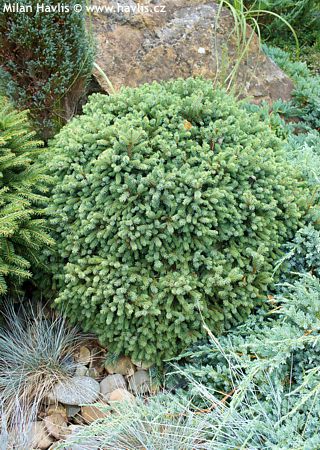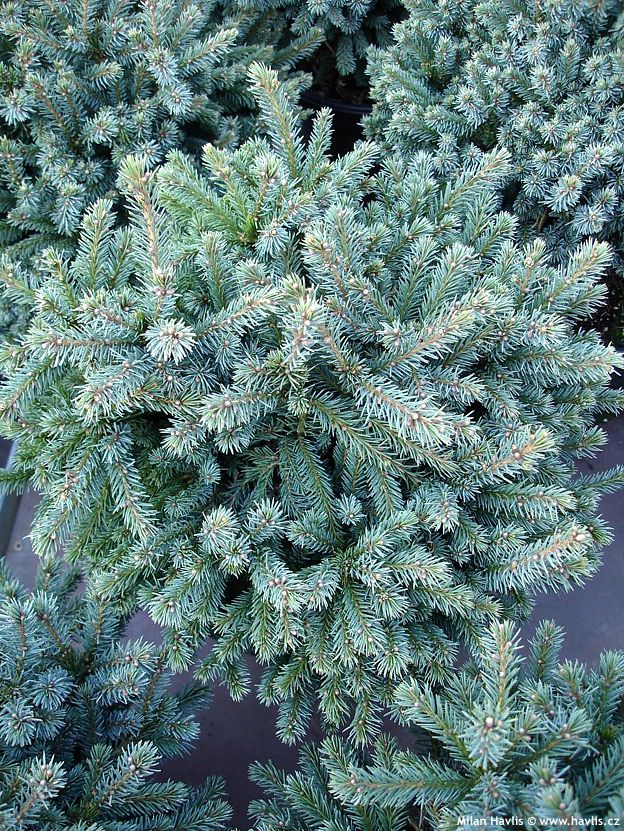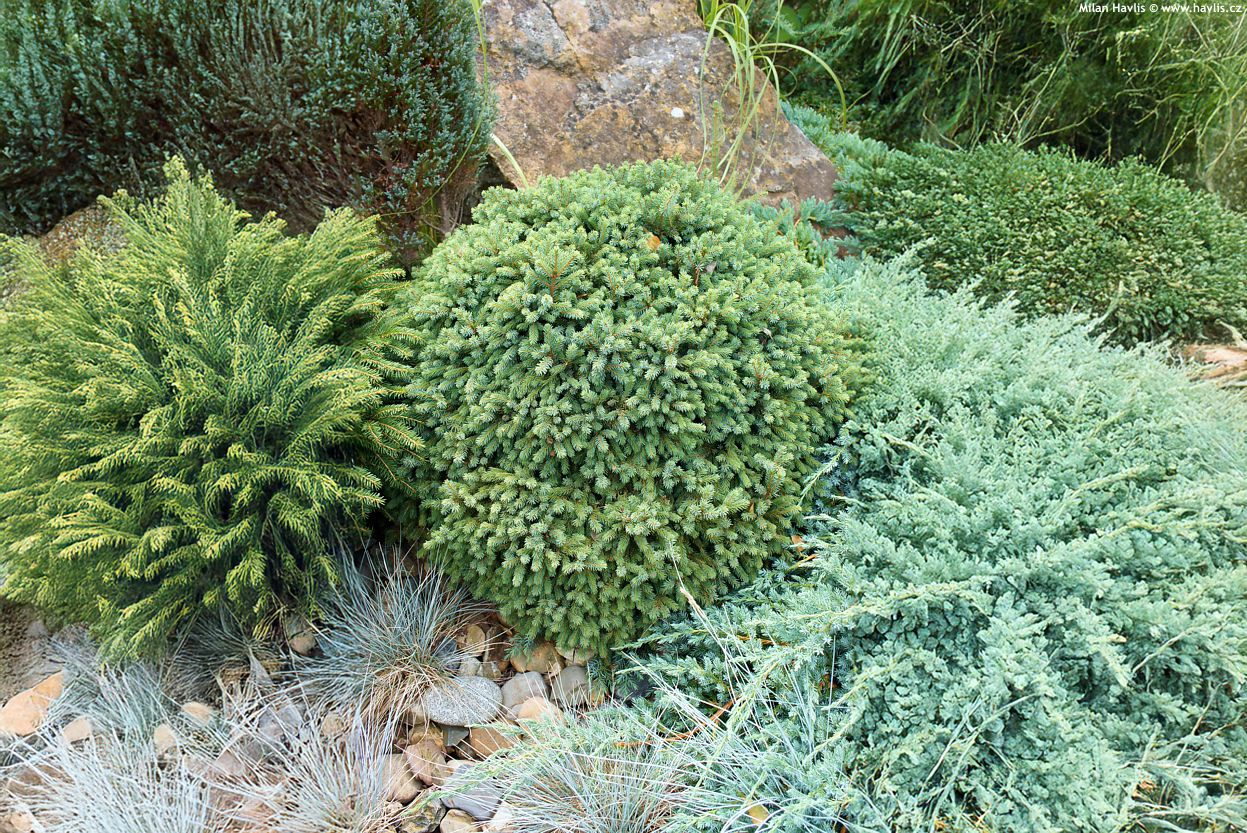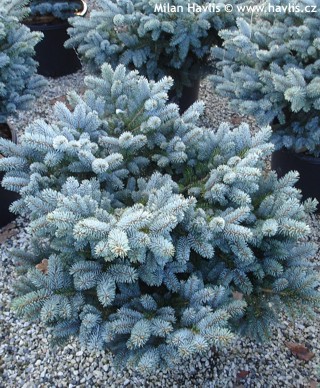Picea glauca 'ECHINIFORMIS' dwarf white spruce
Picea
White spruce is a North American species whose other name Alberta spruce aptly honours its origin. It belongs among the hardiest spruce species with distribution up north to the Arctic Ocean. The species is a very tall tree reaching 30 meters in height, rarely more, but in Europe it is smaller and rarely cultivated. It used to be a popular Christmas trees while spruce was in fashion, but Europe has plenty of its native spruce species, and in the new millennium, fir trees with non-prickly and glossy needles have overwhelmed the Christmas trees market. However, there are attractive forms of white spruce, often dwarf, especially the albertiana variety, which was discovered at the turn of 19th and 20th century in Alberta, Canada, as a witch’s broom and introduced in 1903 named Conica. Since then, several varieties of different needle colour and habit, mostly of low growth, have been developed.
Echiniformis is a very slow growing variety of white spruce. It bears evergreen needles that are short, only about 7 mm long, they are blue-green and look great when there is a deep green background and dark brown mulch underneath. Being a dwarf plant it will fit even the smallest of gardens. 25 year old plants are some 50 cm tall and twice as wide. Pruning is not needed but can be done in early spring if you want to shape the plant or make a groundcover of it.
This spruce is not picky about soil type but hates extremes: too wet or too dry location will mean a slow death of the plant. And avoid too chalky soils. But grown in equally moist soil it will make a beautiful specimen plant or a nice feature in a small border. It is a great pot plant as it can withstand hard frost it can be placed outside in a container all year round. Hardy to about -40°C (USDA zone 3).
Last update 19-02-2011
Goods are shipped all over Europe. For Russia and U.K. and for further details please read about SHIPPING OPTIONS HERE.
Are you interested in a serious discount for orders NOV-FEB? Check your options here.
THE PRICES INCLUDE VAT of 15%. For quick conversion you can use 1 CZK = approx. 0.04 EUR
- STANDARD QUALITY - Plants of this group are 1st class quality with number of branches and overall density adequate to their size and age, considering they were container grown.
- DE LUXE QUALITY - This label guarantees a luxurious quality of manually selected plants that, compared to their height and age, are exceptionally dense and beautiful.
- EXTRA - These plants are usually mature and bigger specimens with exceptional overall appearance.
- STANDARD (as described in the plant form) means a tree with a trunk of 190-210 cm and a crown at the top, unless specified differently. The commercial size for trees is their girth measured in the height of 1m from ground.
- HOBBY - These plants are of the same quality as our standard-quality plants but younger and therefore cheaper.
- SHRUB - a woody plant with branches growing bushy from the ground level.
- HALF-STANDARD or MINI-STANDARD - a small tree with shorter trunk, its size is usually specified.
- FEATHERED - These are trees with branches growing already from the base of the trunk and up along the stem.
- GRASSES and PERENNIALS - Sizes given usually read the diameter of the pot or the clump, as specified.







































